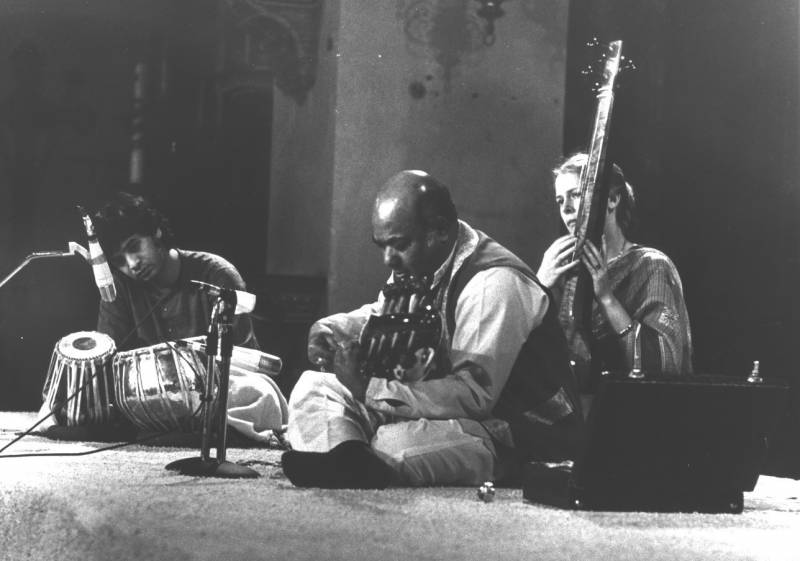In May of 1970, at a San Francisco concert venue best known for reverberating with the sounds of the Grateful Dead and Jefferson Airplane, three masters of Indian classical music took the stage for a celebration of Indian ragas. The concert was recorded by another legend of the time: Owsley Stanley, the man who designed the Dead’s innovative sound system, as well as making what was reputed to be the best LSD of its day. That recording is now available as a live album, titled Bear’s Sonic Journals: That Which Colors the Mind.
On that night, Indian sarod master Ali Akbar Khan was joined on stage by sitar player Indranil Bhattacharya and a 19-year-old percussionist named Zakir Hussain. Hussain had just arrived in America a few months before, occupied with finding his way around the country and understanding the slang: “Words like ‘far-out’ and ‘groovy’ and all weren’t quite registering,” he says.
The language of the hippie generation may not have clicked for Hussain, but sitar maestro Ravi Shankar had already electrified the Woodstock and Monterey Pop festivals. The audience in San Francisco that night was primed to listen.
“In India, I was used to playing with the audience chiming in,” Hussain recalls. “Everybody saying ‘Wow’ and … ‘Do that again,’ and all that stuff. But here the audience was quiet, eyes closed, meditative. The room was dark so you couldn’t really make eye contact with the audience, and so you were left to rely on your interaction with your fellow musicians.”
Since his first American concert, Zakir Hussain has become perhaps the most famous tabla player in the world. He now lives in California, and he says it was this performance 50 years ago that showed him that Indian classical music could be played in the West in its purest form. “It really set the tone of how I would present myself to my fellow musicians—whoever I was accompanying—for the rest of my life.”

9(MDAxOTAwOTE4MDEyMTkxMDAzNjczZDljZA004))

